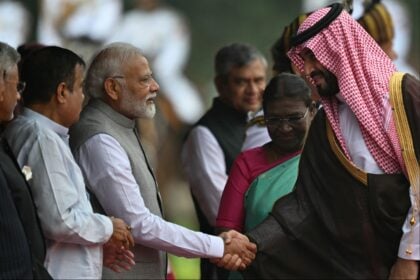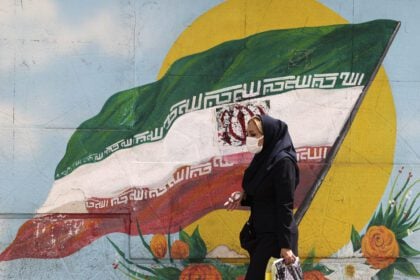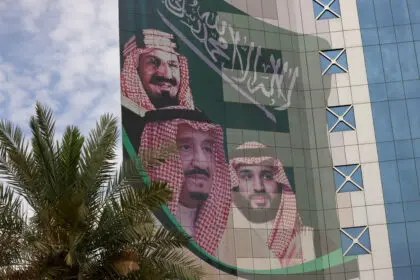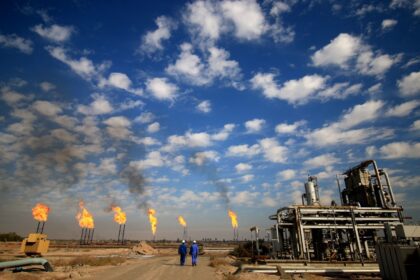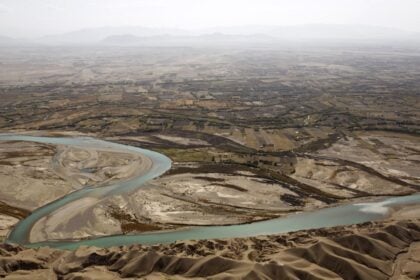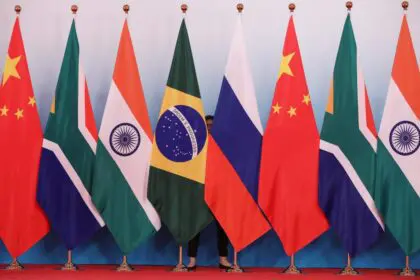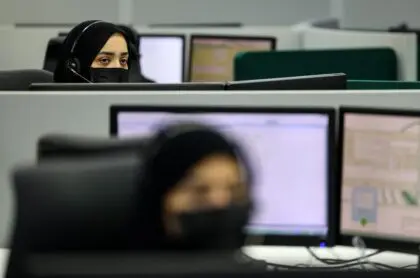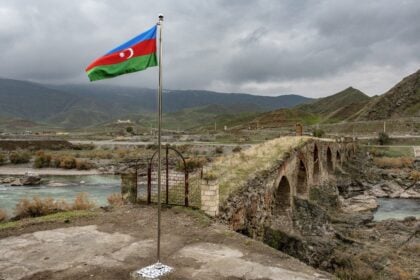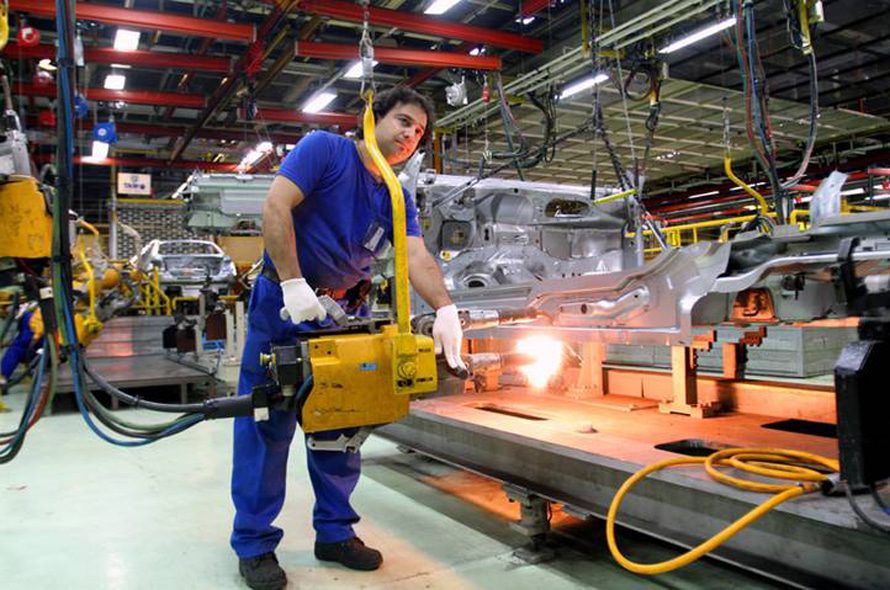
Introduction
The economic structure of the Islamic Republic of Iran is based on three sectors: the public, private and cooperative sectors — the cooperative sector consists of socio-economic cooperatives. According to the country’s constitution, the public sector includes all large-scale and strategic industries, foreign trade, large mines, banking, insurance, power supply, dams and major water supply networks, radio and television, post, telegraph and telephone services, aviation, shipping, roads and railways and the like.
The private sector comprises agriculture and animal husbandry, industry, and medium-sized construction, cement manufacturing and mining companies, in addition to trade and services that supplement the economic activities of the public and cooperative sectors, such as small workshops, agriculture, transformative industries, and services.
The hydrocarbon, agricultural, and service sectors play a significant role in the Iranian economy. Iran ranks second in natural gas reserves and fourth in proven crude oil reserves. Despite the relative diversity of the Iranian economy, economic activity and government revenues are still highly dependent on oil returns and, as such, are volatile, given the fluctuations in oil prices.
According to World Bank reports, Iran’s economy has slowly recuperated from a decade-long stagnation, hampered by two rounds of economic sanctions, the oil-price cycle and the COVID-19 pandemic. After two consecutive years of stagnation, Iran’s economy only began to achieve positive growth in the fiscal year (FY) 2022.
Gross Domestic Product
The GDP (measured with constant prices of FY 2012) amounted to 3,443 trillion rials, including oil, and 3,000 trillion excluding oil in the first six months of FY 2021. In contrast, the GDP was 3,510 trillion rials, including oil, and 3,039 trillion rials excluding oil, in the same period of FY 2020, which indicates a contraction of 1.9 per cent of GDP including oil, and 1.3 per cent of GDP excluding oil, in the first six months of FY 2021.
The real GDP in FY 2021 was approximately the same as in FY 2011. Real GDP per capita in FY 2021 fell to its FY 2005 level. However, the oil and services sectors recovered in FY 2022’s first nine months, recording a growth rate of 11.7 per cent and 6.5 per cent, respectively – after the return of global and local activity in the wake of the COVID-19 outbreak – which led to an overall annual growth of 5 per cent. However, the agricultural sector contracted by 2.1 per cent due to drought and energy blackouts.
The World Bank expects Iran’s economic future to remain subject to significant risks.
It also expects its average GDP growth to remain modest in the medium term due to weak domestic and global demand caused by the ongoing impact of the pandemic, as well as sanctions-related restrictions, particularly on Iranian oil exports.
The economic growth in FY 2022 reached 4.4 per cent, and the actual volume of the Iranian economy was more than 1,450,000 billion tomans (345,238 billion dollars) [1 toman = 10 thousand rials]. Due to the stagnation in the service sector in FY 2021 as a result of the pandemic, economic growth, excluding oil, was less than 0.5 per cent of the total growth, showing the impact of oil on the country’s economy during the said year.
As a result of the relative decrease in the COVID-19 virus’ severity and society’s acclimation to the new conditions, economic growth in the service sector was very high in FY 2022 and, as such, was responsible for a significant chunk of that year’s economic growth.
The achieved growth rate was about 0.3 per cent higher than the growth rate recorded in FY 2021, as more than 60,000 billion tomans ($14.29 trillion) were added to the actual volume of Iran’s economy.
Statistics indicate a sharp stagnation in agricultural activity during FY 2022, with a negative growth rate of 5.8 per cent compared to FY 2021, which led to a sharp decrease in the proportion of agricultural workers out of the total number of workers in rural areas. Central Bank data also indicates a slowdown in the growth rate of industries and mining in FY 2022, reaching 1.1 per cent, compared to 7.3 per cent in FY 2021.
However, the added value produced in the service sector, the biggest saviour of the Iranian economy, amounted to 838 trillion tomans ($199.52 trillion) in FY 2022, compared to about 787 trillion tomans ($187.38 trillion) in FY 2021. Simply put, the actual volume of the public service sector in FY 2022 grew by 6.5 per cent compared to FY 2021, amounting to 51 trillion tomans.
World Bank data suggest that the GDP at constant prices grew between 2019 and 2020, reaching a 3.1 per cent growth in 2020, compared to the stagnant growth rate of the previous year. Also, the per capita GDP increased by 0.45 per cent in 2020 compared to 2019.
Industry
The fiscal year 2022 experienced seasonal fluctuations in the growth of industry and mining. An Iranian Ministry of Industry report stated that foreign investment fell to $485 million in the first five months of the year, a 45 per cent drop compared to the same period in the previous year, which may affect the seasonal growth of industrial and mining activity.
Donyaye Eghtesad, which specialises in Iranian economic affairs, asserts that this fluctuation shows in the ups and downs of the sectors’ seasonal growth – resulting from their staggering performance in FY 2022’s four seasons – and the occasional disparate imbalances in capital formation.
Economic measures implemented by the government and events like the presidential election have also led to fluctuations in the industrial sector. Simultaneously, the decline in purchase power of the general classes and households and significant shortages in raw materials and machinery industries have amplified the volatility. Blackouts and gas outages in summer and winter exert additional pressure on the industrial and mining sectors.
Despite these circumstances, the industrial and mining sectors’ growth amounted to 4.1 per cent. However, in seasonal terms, the growth showed a vast imbalance. After industrial and mining activity witnessed growth in the spring, it decreased in the summer. According to a report by the Statistical Centre of Iran, this dynamic was repeated in the fall and winter, recording a seasonal growth in the spring, summer, fall and winter of 7.1 per cent, 2.3 per cent, 4.5 per cent and 2.8 per cent, respectively.
The industrial and mining sector’s growth rate in FY 2022 did not differ significantly from the previous year. The Assistant Undersecretary for Projects and Planning Affairs at the Iranian Ministry of Industry, Mining and Trade confirmed that, in FY 2021, the industrial sector recorded a growth of 2.1 per cent and the mining sector 1.9 per cent.
In 2019, the industrial sector was responsible for around 31 per cent of the country’s total employment.
Agriculture and Livestock
Agriculture plays a vital role in Iran’s economic sector, accounting for more than a quarter of GDP and employing about a quarter of the country’s workforce. However, Iranian lands face a multitude of issues. According to the Borgen Project, overpopulation, destruction of natural resources, over-reliance on pesticides and chemicals, limited arable land, soil erosion, and water pollution collectively threaten sustainable agriculture in Iran.
Reduced precipitation levels due to climate change have recently exacerbated water scarcity in Iran. Over the 2010s, the Iranian authorities invested substantial political and financial capital in addressing the growing issue of water scarcity.
This included initiatives to desalinate water from the Persian Gulf and transfer it to water-poor provinces in central Iran to provide desalinated water to the vast agricultural sector in Iran, which accounts for about 90 per cent of water use in Iran. A third of this water is used solely to grow wheat — of which Iran produces about 13.5 million tons annually, making it the country’s primary crop.
In 2021, Ferial Mostofi, president of the Center of Investment and Consultancy Services at Iran’s Chamber of Commerce Association, was quoted saying: “The country’s overall wheat harvest was estimated to be between 10 to 11 million tons, falling short of the annual average of 15 million tons.” This was a direct consequence of the country’s worst drought in 50 years during 2021’s growing season, prompting international chambers of commerce to adjust their expected imports upwards.
Statistics indicate that the Iranian agricultural sector entered a recession in FY 2022, as this sector’s economic growth rate decreased to 2.6 per per cent – compared to 3.2 per cent in the previous year – as an aggregate result of the negative growth recorded by the sector in all seasons of FY 2022. Towards the end of the year, the negative growth steadily rose from -2.3 per cent in the spring to -3.4 per cent in the winter. The Central Bank of Iran attributes the stagnation of Iran’s agricultural sector to the drought of FY 2022.
The production volume of various crops in 2019 amounted to about 81.2 million tons, and the area of agricultural land totalled 11.1 million hectares, according to the head of the Information Technology and Communication Centre of the Iranian Ministry of Agriculture, Karim Ahmadi Someeh.
He added that wheat production amounted to 13.3 million tons from approximately 5.4 million hectares, representing 16.4 per cent of the total crops. The cultivation of wheat accounts for 48.7 per cent of the usage of agricultural land. Grain production exceeded 20.45 million tons, and cultivated areas surpassed 7.6 million hectares in 2019.
Karim Ahmadi indicated that the volume of horticultural crops yielded 20.53 million tons, using roughly 2.46 million hectares of land. Orange, grape and apple crops accounted for the most significant percentage of fruit production, reaching 15.1 million, 14.8 million and 14.3 million tons, respectively.
In terms of livestock, the production of protein products increased from 14.23 million tons in 2017 to 14.77 million tons in 2018, representing a growth of 3.8 per cent.
The production of red meat reached 829.5 thousand tons (5.62 per cent), milk 10.588 million tons (71.71 per cent), chicken meat 2.355 million tons (15.95 per cent), eggs 901.5 thousand tons (6.11 per cent), and honey 90.5 thousand tons (0.61 per cent).
The production of fisheries increased from 1,202.1 thousand tons in 2017 to 1,238.6 thousand tons in 2018, presenting an increase of 3 per cent.
Workers in the agricultural sector were estimated to make up 17 per cent of the total workforce in 2019. The value added in the agricultural sector was estimated at 12.8 per cent of the 2020 GDP.
Foreign Trade
Iran’s foreign trade experienced growth in terms of the weight of traded goods in 2019-2020, against a decline in the trade value. The value of foreign transactions decreased by 3.2 per cent to $85.054 billion, while traded goods’ weight increased by 12.8 per cent to 169.629 million tons.
The increase in the value of imports against the decrease in the value of exports led to a trade balance.
The value of imports increased by 2.7 per cent to reach 51.8 per cent of the total foreign trade. On the other hand, imports’ weight declined by 0.4 per cent to 21.1 per cent.
Exports
The value of total exports decreased by 8.2 per cent to $40.996 billion. In contrast, the weight of exports increased by 13.4 per cent to 133.813 million tons (including natural gas condensates) in FY 2020, compared to FY 2019.
Iran’s primary export markets include China, Iraq, Turkey, the UAE and Afghanistan.
Imports
The value of imports increased by 2.1 per cent to $44.058 million in 2019-2020. The weight of imported goods increased by 10.7 per cent to 35.816 million tons. Therefore, the value of imports per ton decreased by 7.8 per cent to $1,230. The share of raw materials and intermediate goods in the total import value rose by 1.3 per cent to 68.6 per cent, while the shares of capital and consumer goods decreased by 1.7 per cent and 0.2 per cent, respectively, to a combined 15.2 per cent. China, the UAE, Turkey, India, and Germany were Iran’s largest export markets in 2019-2020.
The 7.8 per cent decrease in the value of imports per ton, along with the 19.1 per cent decrease in the value of exports per ton, led to a 12.2 per cent decrease in trade in 2019-2020 compared to the previous year. Accordingly, terms of trade decreased from 0.284 in 2018-2019 to 0.249 in 2019-2020.
Poverty
Iran has no established official poverty line. The World Bank, therefore, measures poverty in Iran using the international poverty lines expressed in US dollars at the 2011 purchasing power parity (PPP), using the upper middle-income category line of $5.50.
Using this measure, between 2009 and 2013, poverty in Iran fell by 4 per cent to about 11 per cent before increasing to 13 per cent and 18 per cent in 2017 and 2019, respectively.
National figures hide sharp differences in urban versus rural poverty incidence, with much higher rates of rural poverty of around 27 per cent compared to about 6 per cent in urban areas in 2017. When adjusting for access to education and basic infrastructure and a daily consumption of less than $1.90 per person, poverty in Iran remained below 1 per cent in 2019. Inequality fell sharply between 2009-2013 from 42.0 points to 37.4 points but increased to 40.8 points in 2017.
A Poverty and Equity Brief by the World Bank Group states the following with regard to poverty in Iran:
“Iran could not sustain positive growth in per capita expenditure for the bottom 40 percent of the population during 2014-2017 despite experiencing positive economic growth. In fact the bottom 40 percent experienced a negative growth rate of 0.13 percent over this period, while on average consumption increased by about 1.9 percent.
This outcome is due to the erosion in real terms of the universal cash transfers distributed to compensate for increasing energy prices after the subsidy reforms.
Cash transfers were instrumental to reducing poverty during 2009-2013, but because of high inflation, the real value of benefits diminished. Given the much larger share of transfers in the budget of poor households, negative impact from falling transfer for them was stronger than the slight poverty reduction effects coming from the labor market.”
Infrastructure
The total length of roads in Iran is an estimated 223,485km (2018 est.), of which approximately 195,485km are paved, connecting Tehran with the rest of the country and neighbouring countries.
In 2020, the main railway lines’ length was an estimated 11,226km, 6,651km more than at the beginning of the Iranian revolution in 1979, with an annual increase of about 166km.
There are 319 airports (2021 est.) in Iran, 140 of which have paved runways. This includes 58 major airports. Iran’s pipeline system transports natural gas, liquid petroleum gas, petroleum and refined products. The main ports in Iran are located on the Persian Gulf at Asaluyeh, Bandar Abbas and Bandar Imam Khomeini.
The Tehran Metro was launched in March 2006, with two lines connecting the capital from north to south and east to west. The first line extends 42km, from Tajrish Square in the north to the southern extension of Tehran-Imam Khomeini Airport in the south and passes through 29 stations.
The second line extends 26km and has 22 stations, starting from the southwest of Sadeghiyeh, west of Tehran, and extends to the Eshragh Cultural Center, east of Tehran, passing through the Baharestan district.
The third Tehran metro line was established with a length of 37km and 28 stations as one of the longest metro lines, starting from Azadegan Station in southwest Tehran and ending in the northern regions of Tehran. The fourth line extends 22 kilometres and has 19 stations, starting from Shahid Kolahdooz station in eastern Tehran and ending at the station and intersection of the fifth line west of Tehran.
The fifth line, extending 43km with 11 stations, connects the Sadeghiyeh metro station in western Tehran with the Golshahr station in the Golshahr district of Karaj.
Tehran’s sixth line stretches 31km with 27 stations from the southeast in Dowlat Abad to Sologhan in northwest Tehran. The seventh line was considered one of the most congested lines. The approved route of Line 7 begins in the southeast of Tehran from Takhti Stadium and passes from east to west through the city’s main routes.
Tourism
The World Travel & Tourism Council reported a 40% growth in Iranian tourism in 2021, in addition to an expenditure of around $2.5 billion by foreign tourists in Iran.
Tourism in Iran experienced a revival in 2021 with a positive growth estimated at 40%, recording returns of 202 trillion tomans ($48.095 trillion), compared to a negative growth of 45% in 2020 because of the COVID-19 pandemic. Its returns amounted to 144 trillion tomans ($34.286 trillion) after tourist inflows decreased from 9.11 million in 2019 to 1.55 million in 2020.
Tourism amounted to 3.1% of the entire Iranian economy in 2020, rising to 4.1% in 2021, with the effects of COVID-19 relatively receding.
Employment in tourism has increased in Iran. In 2020, 1.2 million people were employed in the Iranian tourism industry, whereas in 2021, this number rose to 1.9 million people, an increase of 700,000 people, equivalent to 58%.
The Iranian revolution (1978-1979) and the Iran-Iraq war (1980-1988) inflicted significant damage on the tourism sector. Yet, it has been recovering since the 1990s, as the number of tourists increased from 452,000 in 1995 to 9.11 million visitors in 2019.
The number of Iranian hotels has increased by 400%, from 291 hotels in 1978 to 1200 hotels in 2018, in addition to guesthouses. The total number of beds in hotels and guesthouses combined reached 400,000 in 2017.
Banking
Iran ranks first in acquisitions of Islamic banking assets in the global Islamic financial system, as it owns more than 37% of banking assets compliant with Islamic law in 2022. Islamic banking in Iran is one of the features of the reorganisation of Iranian society after the revolution. The Iranian banking sector also encompasses governmental commercial banks, specialised government banks, Qard al-Hasan banks, and private banks.
The Central Bank of Iran (CBI) was established in 1960. The Iranian banking system was nationalised in 1979, and in 1983 the usury-free banking law was enacted in line with the principles of Islamic law.
Therefore, the CBI designed and implemented monetary and credit policies according to the laws amended after the Khomeinist revolution, where Islamic contracts based on profit and loss sharing were used. These contracts can be classified as fee-based and free service contracts.
Accordingly, some of the profit and loss partnership contracts are musharaka, mudharabah and mozara’ah, which include private and official partnerships.



